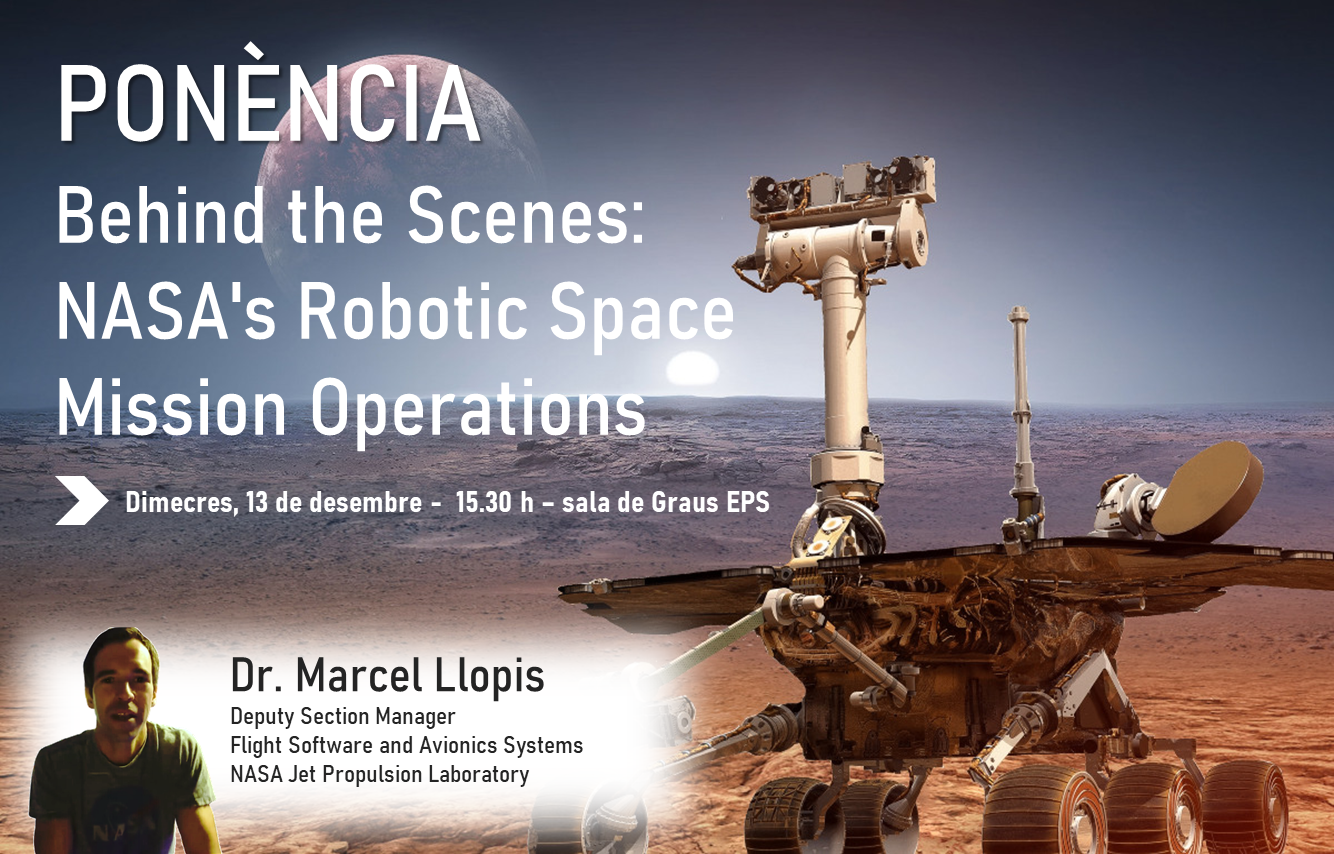Ponència. "Behind the Scenes: NASA's Robotic Space Mission Operations"
a càrrec del Dr. Marcel Llopis, Director adjunt de la secció del Laboratori de Propulsió a Jet de la NASA i antic alumne d'enginyeria informàtica de l'EPS
- Lloc:
- Sala de Graus EPS (2.03)
- Adreça:
Campus de cappont
Escola Politècnica Superior
Jaume II, 69
- Preu:
- Activitat gratuïta
- Organitza:
- EPS
- Inici:

El proper dimecres 13 de desembre a les 15.30h, la Sala de Graus de l’Escola Politècnica Superior acollirà la ponència “Behind the Scenes: NASA's Robotic Space Mission Operations” a càrrec del Dr. Marcel Llopis, Director adjunt de la secció del Laboratori de Propulsió a Jet de la NASA de Programari de Vol i Sistemes Aviònics i antic alumne d'enginyeria informàtica de l'EPS.
El Dr. Marcel Llopis disposa d’una àmplia de més de vuit anys a la NASA on és el codirector del grup que dissenya els ordinadors i el software que s’utilitza a les missions robòtiques espacials de la NASA, com ara els vehicles robòtics “rovers” que s’han enviat a Mart.
La ponència s’emmarca dins l'assignatura d'Eines Computacionals per a la resolució de problemes del Grau en Enginyeria Informàtica però resta oberta a tothom que vulgui assistir-hi.
Abstract:
NASA's Jet Propulsion Laboratory (JPL) is at the forefront of Planning and operating ambitious robotic space exploration missions that have transformed our understanding of the solar system and the potential for life beyond Earth. In this talk, Marcel Llopis, JPL's Deputy Director of Flight Software and Avionics, will offer an insider's perspective on how interplanetary missions like Mars rovers and orbiters are developed from idea to reality.
The presentation will cover JPL's specialized role within NASA, the history of its pathbreaking missions, and an overview of current cutting-edge projects for mapping Mars, visiting icy moons, and sampling asteroids. We will delve into the complex technical details involved in mission planning, from initial science goals setting to activity scheduling, modeling spacecraft systems, analyzing observational opportunities, and devising viable flight plans. Attendees will learn how JPL leverages its deep expertise in areas ranging from avionics to AI to create spacecraft capable of navigating millions of miles of space and years of operations. We will also cover emerging computer and software capabilities being built to enable future high-risk, high-reward missions that could unlock more secrets of the solar system and potentially evidence of life beyond Earth.
